In February 2020, the civic general body had cleared a proposal of renaming civic schools as MPS. The decision was taken in order to change the image of municipal schools and attract more students as the numbers had been seeing a decline
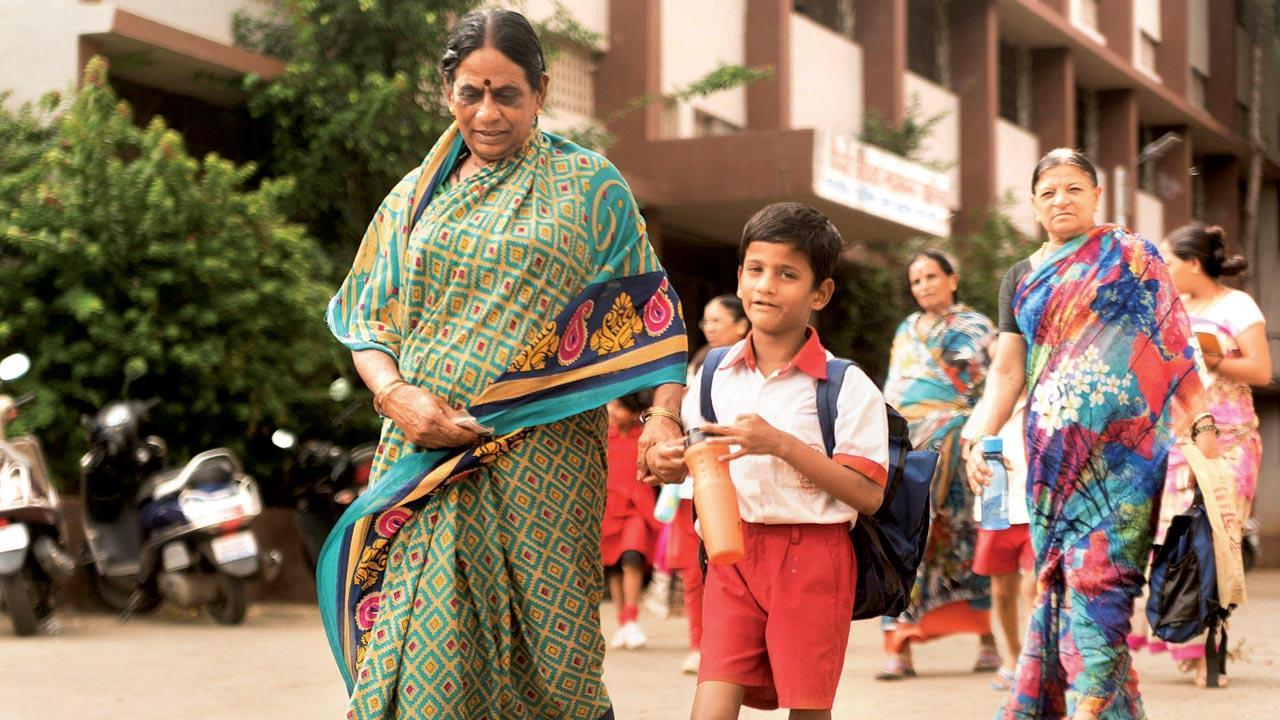
Children at a BMC school run by non-profit Akanksha Foundation, which uses MCGM infrastructure to provide quality teaching to students from low-income communities. The school model also includes parents as partners
Deepak Phalekar, who works as an electrician at the Mumbai Port Trust, has enrolled his children, Yukta, a Class VIII student, and Malhar, in Class III, at Wadibunder Mumbai Public School in Mazgaon. His eldest daughter, Arya, studied at a private school in the city, but the frequent and arbitrary fee hikes and hyper commercialisation compelled Phalekar to consider a municipal school for his younger kids. “The learning now happens not only in the classroom, but also beyond its walls. And it’s made education more affordable. As a parent, I see my kids enjoying their time at school,” he tells mid-day. The school is run by non-profit Akanksha Foundation, which uses MCGM infrastructure to provide quality teaching to students from underprivileged communities. Similarly, Aseema, Muktangan and 321 Education Foundation are also successfully running schools in partnership with the MCGM.
ADVERTISEMENT
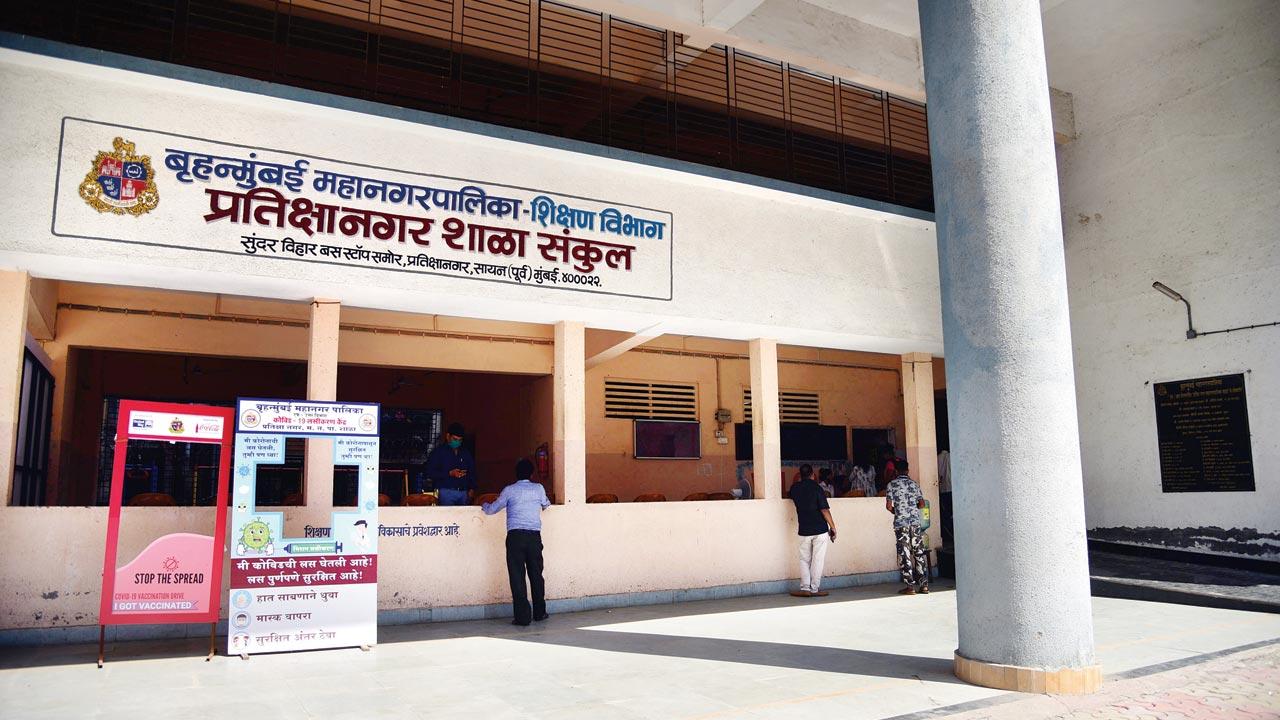 The new Pratiksha Nagar BMC School at Sion. The school will start operations after the state’s green signal to reopen primary schools. Pic/Pradeep Dhivar
The new Pratiksha Nagar BMC School at Sion. The school will start operations after the state’s green signal to reopen primary schools. Pic/Pradeep Dhivar
Phalekar’s feedback is backed by statistics. According to Raju Tadvi, BMC education officer, over 18,000 new students have enrolled in BMC schools in the new academic year. “From 2,63,360 [students] last year to 2,82,276 this year is proof that BMC’s approach is reaping results,” says Tadvi. Cashing in on the momentum, the civic body has floated a new proposal worth R12 crore that includes putting signboards and gates in seven zones covering all municipal school buildings. There will now be a new standardised colour system for all schools under the rebranded Mumbai Public School (MPS) umbrella. In February 2020, the civic general body had cleared a proposal of renaming civic schools as MPS. The decision was taken in order to change the image of municipal schools and attract more students as the numbers had been seeing a decline.
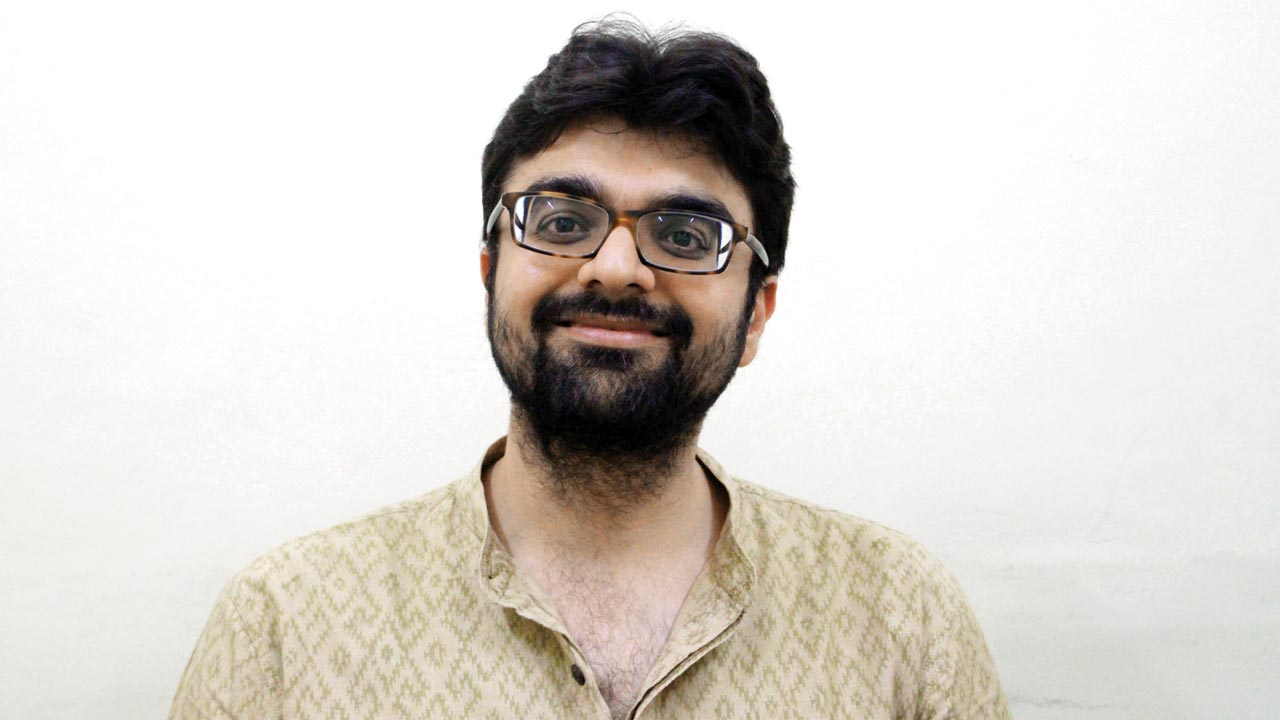 Saurabh Taneja, CEO of The Akanksha Foundation, had recommended the BMC and Aaditya Thackeray to introduce classes starting from junior kindergarten right up to Class X to encourage enrolments
Saurabh Taneja, CEO of The Akanksha Foundation, had recommended the BMC and Aaditya Thackeray to introduce classes starting from junior kindergarten right up to Class X to encourage enrolments
While Phalekar’s children are taught as per the curriculum designed by the state, civic schools will now offer non-state board curriculums such as ICSE, CBSE, and even Cambridge. “The BMC is the first civic body in the country to offer non-state board curriculums in such a variety. This has been a brainchild of Minister of Tourism and Environment Aditya Thackeray who wants civic schools to be at par with any other private schools in the city by focusing on the quality of education, infrastructure and creating a conducive environment for extra-curricular activities,” shares Sainath Durge, member of the BMC Education Committee. While there are 11 CBSE and one ICSE schools functioning under the BMC umbrella, the one affiliated to the Cambridge Board will be launched next year. This year, around 10,000 applications were received for a total of 3,849 seats in these 12 schools. Tadvi owes the higher enrolment to the dedication and commitment shown by teachers during the pandemic. “Our set-up of online learning has been replicated by various Zilla Parishad (ZP) schools across Maharashtra. We have collaborated with NGOs who have expertise in the education sector.”
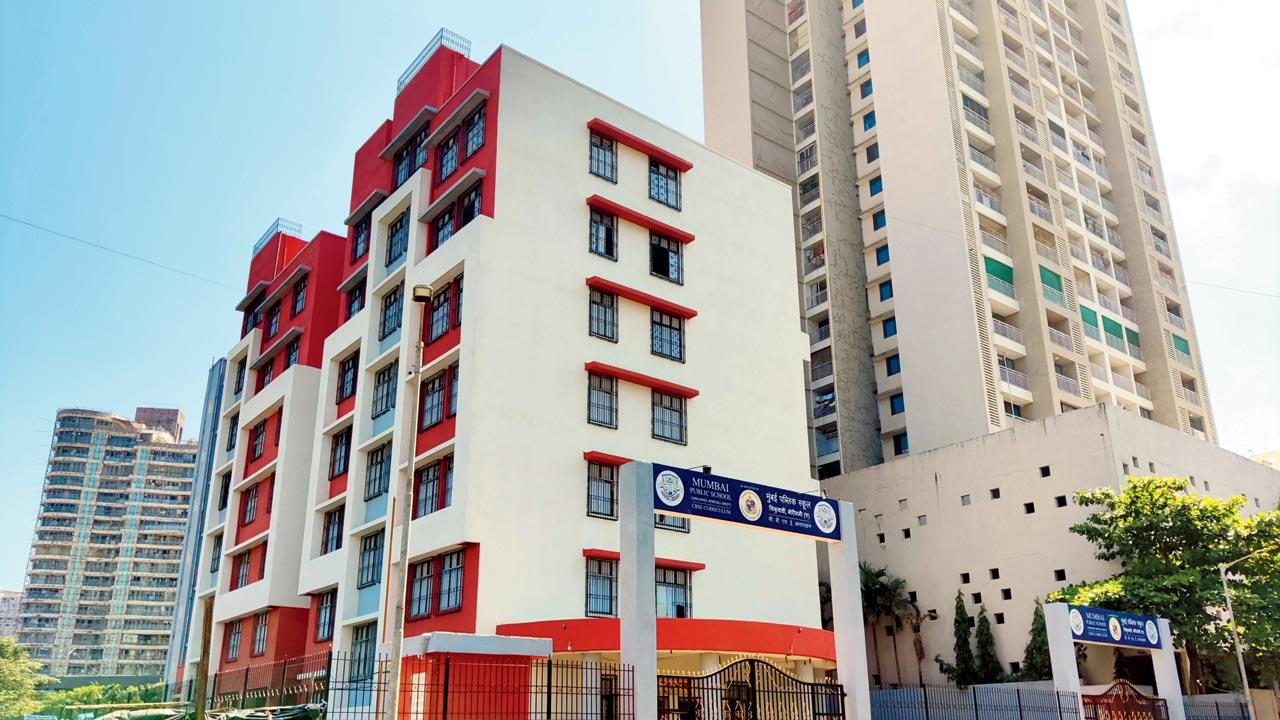 Mumbai public School CBSE at Chiku Wadi, Borivli West. Pic/Nimesh Dave
Mumbai public School CBSE at Chiku Wadi, Borivli West. Pic/Nimesh Dave
Speaking with mid-day, Ajit Kumbhar, Joint Commissioner, Education, BMC, said that the corporation has completed major repair work in 171 school buildings, with 32 new structures being built and 98 repair projects currently underway. “A new logo has been designed for all civic schools. And a total of 326 new gates have been installed too.” This, he believes, will create a feeling of belongingness among students and a sense of uniformity. “We are also looking into details by instituting a committee to choose classroom furniture that is age-appropriate and comfortable to use for long hours.”
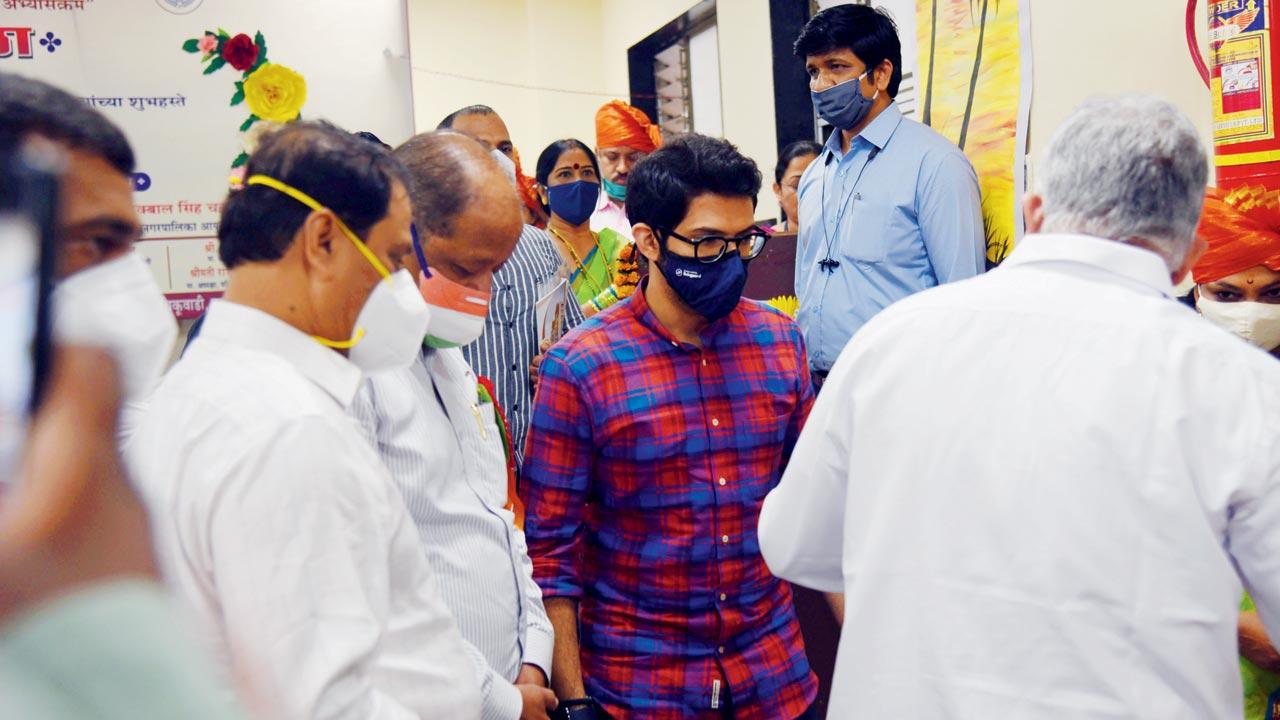 Environment minister Aaditya Thackeray at the launch of the school
Environment minister Aaditya Thackeray at the launch of the school
The idea is to induce a change in perception, believes Francis Joseph, president of SLN Network, an independent professional network of school leaders, and core member of the committee working under the Mumbai Public School brand of civic education in the city. He says the process will kickstart with changing the structure of the school buildings, by taking into account students’ safety and health.
According to Rutu Mody Kamdar, a PhD in Branding and Consumer Behaviour, any school or entity deserves to be re-branded if it goes through a change in vision and strategy. "To reach out to a wider audience and change the common perception, it is a brave and bold move to rebrand BMC schools and develop a narrative that is more appealing and appropriate. Re-branding is simply an alignment of ideology with action," she says, adding that it also encompasses its promise to the students to provide meaningful, contemporary and future-ready educational outcomes.
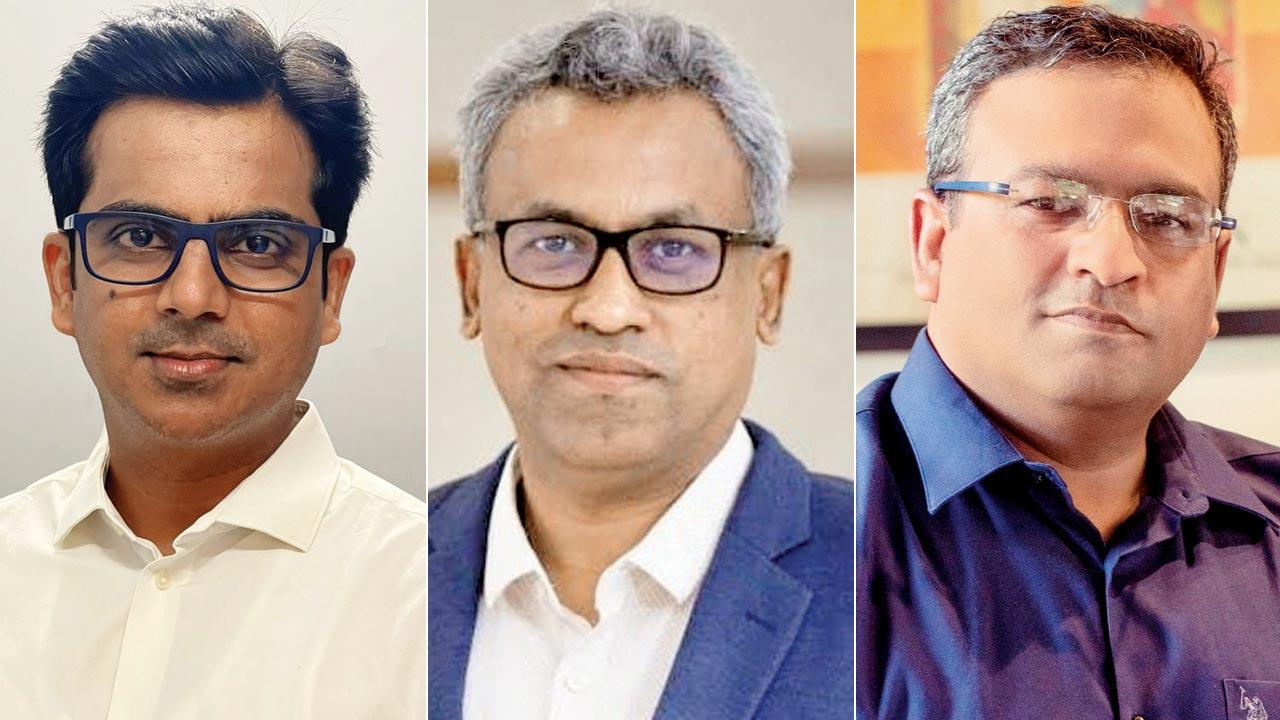 Sainath Durge, Francis Joseph and Pranav Iyer
Sainath Durge, Francis Joseph and Pranav Iyer
Nitin Dalvi from Mahim, who decided to withdraw his son’s admission from a reputed trust’s ICSE board school in Dadar to an ICSE-affiliated civic school in Mahalaxmi, thinks it is nothing but a prestige issue, when it comes to civic schools. “If more parents start thinking along these lines, the standard of civic schools will increase automatically.”
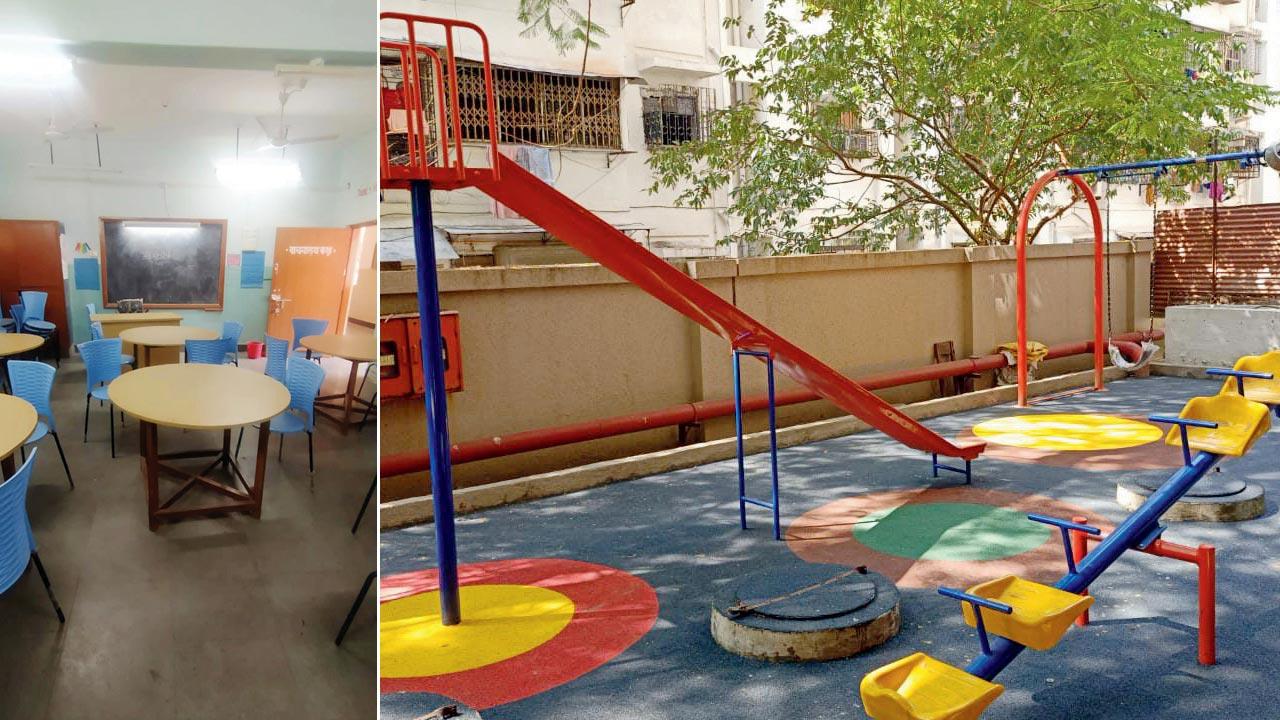 The revamped BMC classroom and play area at Sumer Nagar BMC School in Borivli
The revamped BMC classroom and play area at Sumer Nagar BMC School in Borivli
Architect Pranav Iyer, who is part of consulting faculty at government-run Bharati Vidyapeeth Deemed University in Pune and Dr Bhanuben Nanavati College of Architecture for Women, Pune, believes the move to ‘rebrand’ BMC schools is an attempt to have some of the shine of private ‘public schools’ rub off on civic-run schools. “There is no harm in doing so, but if this is not the first step of a complete audit and overhaul of these schools in terms of standards and facilities, it will be cosmetic. Municipal schools are the last line of defence against illiteracy, and to bring their standards up holistically is a noble goal. Renaming them, not so much.” The concentration of the narrative on the amount being spent is largely immaterial, he thinks. “In my opinion, spend 10 times more if you like, but bring in a set of standards for the schools in terms of facilities and faculty. This way, they will rebrand themselves.” The current perception of municipal schools is two rooms, one teacher, and the mid-day meal being the main attraction for parents, observes Iyer. “While there’s nothing wrong with that, we can improve the facilities and faculty, by focusing on identifying gifted children to move on towards quality higher education. The strength of municipal schools, after all, is their aura of inclusiveness and their accessibility.”
 Deepak Phalekar, who works as an electrician at the Mumbai Port Trust, enrolled his children Yukta and Malhar at the Wadibunder Mumbai Public School in Mazgaon, as he got fed up with the the frequent and arbitrary fee hikes at a private school
Deepak Phalekar, who works as an electrician at the Mumbai Port Trust, enrolled his children Yukta and Malhar at the Wadibunder Mumbai Public School in Mazgaon, as he got fed up with the the frequent and arbitrary fee hikes at a private school
A few years ago, Saurabh Taneja, CEO of The Akanksha Foundation, was one of the NGO representatives roped in to guide a committee that was set up by environment minister Aditya Thackeray and BMC officials to find ways to better the level of education at civic schools. One of the recommendations that Taneja had submitted was to introduce classes starting from junior kindergarten right up to Class X. “We felt that this shift would encourage parents to send their children to BMC schools. Right now, after Class VII or VIII, children have to find another balwadi or a secondary school to complete their education. This change would ease the burden on parents.” The integrated approach at the English-medium Mumbai Public Schools of offering kindergarten to Class X under one roof is one of the reasons for its success, he feels. “We also requested for greater autonomy for the principal to be able to make the decisions instead of following top-down orders.” In a post-pandemic world, Taneja thinks the thrust should be on how to retrain the teachers in making up for learning loss and bridging the socio-emotional needs of children.
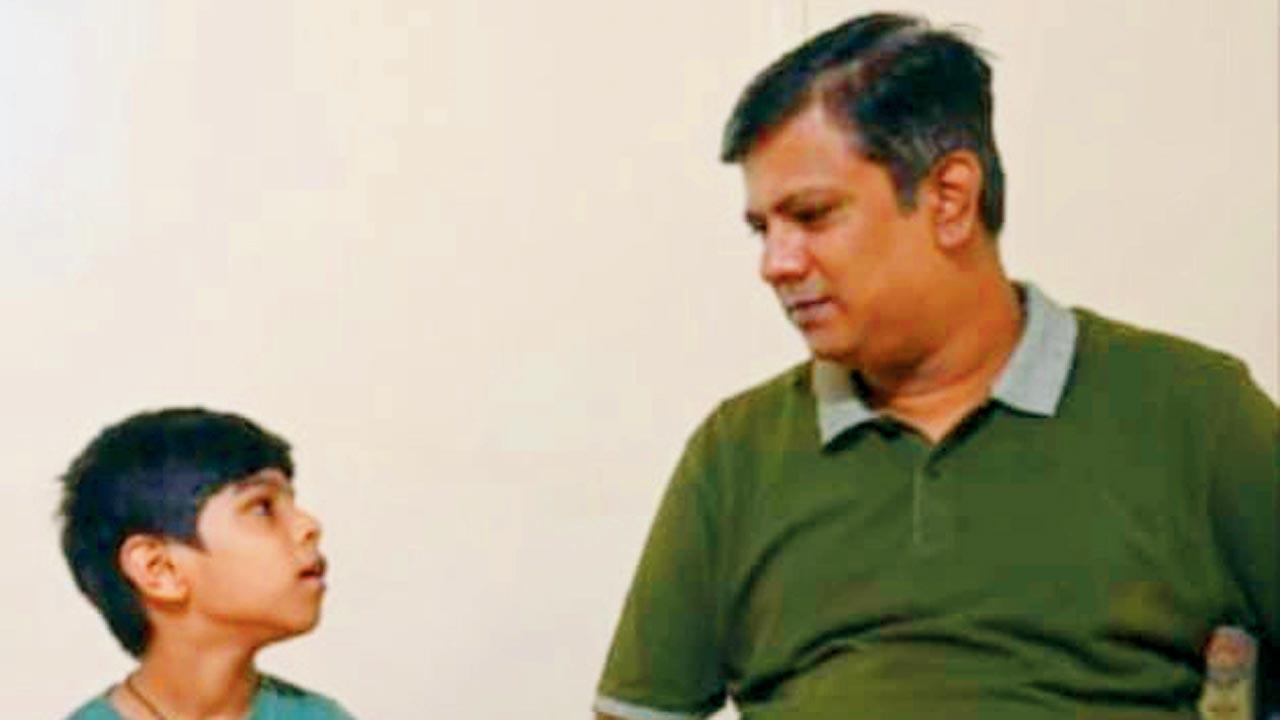 Nitin Dalvi from Mahim withdrew his son’s admission from an ICSE board school in Dadar to an ICSE-affiliated civic school in Mahalaxmi
Nitin Dalvi from Mahim withdrew his son’s admission from an ICSE board school in Dadar to an ICSE-affiliated civic school in Mahalaxmi
A fine example of a turnaround in the quality of education by civic schools is evident in Delhi government’s Chunauti campaign, thinks Prashant Jain, CEO at Oswaal Books, one of the leading publishers of educational books in India. The national capital’s once-forgotten government school system underwent a rehaul in 2016. “The government, which has been in charge of education since 2015, introduced new teacher-training courses and provided generous resources to improve ailing schooling infrastructure. They also introduced a happiness curriculum with a variety of innovative classroom learning tools to give the classroom experience a major facelift.” The Chunauti programme was initiated to put a check on the dropout rate and improve the quality of education with a special focus on the weakest students. In the subsequent version of the scheme, Chunauti 2018, students from Class VI to VIII were mapped and their learning levels enhanced.
There’s no dearth of success stories of government-run schools globally. The Obama Administration launched a four-pronged strategy specifically to turn around Low Performing Public Schools, as part of the American Recovery and Reinvestment Act of 2009. “By using the ‘turnaround, restart, transformation, and school closure approach’, where depending on the nature of low performance, different strategies were implemented for improving Public School Education in the USA,” shares Iyer, adding, that the most significant improvement in school performances was seen in low performing public schools in the Chicago Metropolitan Area. Taneja suggests we can even look beyond the West and take a leaf out of Southeast Asian countries like Vietnam that has left education policymakers around the world marvelling at its success in access to general education and learning outcomes. This, despite the country’s relatively low level of economic development. The government has reportedly devoted between 15-20 per cent of its entire spending budget to education since the late 1990s, remaining at 20 per cent over the past five years. The first Education for All (EFA) action plan saw the country make impressive strides in the areas of universal primary education and gender equality, while the second EFA plan built on the momentum by turning the focus to quality universal lower-secondary education. “Vietnam is not comparable to India in terms of size, but perhaps GDP and per capita income, yes. Their ability to transform the quality of education at government schools by investing in school infrastructure and encouraging teachers to use more engaging student-centred classroom methods, is noteworthy,” says Taneja.
18,000
Number of new students who’ve enrolled in BMC schools this academic year, according to the education officer
 Subscribe today by clicking the link and stay updated with the latest news!" Click here!
Subscribe today by clicking the link and stay updated with the latest news!" Click here!







